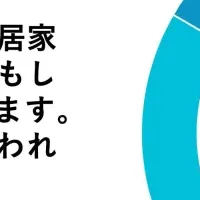
Veeva Pulse Report Highlights the Need for Optimized Content in Healthcare Engagement Strategies
Understanding the Veeva Pulse Report
The recent findings from the Veeva Pulse Field Trends Report shed light on the crucial role that content-driven engagement plays in the adoption of new treatments. In the competitive landscape of healthcare, the effectiveness of engagement strategies is not merely about creation but rather about how well this content is utilized in conversations with healthcare professionals (HCPs).
Key Findings
According to the report released by Veeva Systems, there are clear gaps between content generation and its deployment in the field. Despite substantial efforts in content creation, healthcare teams are not effectively leveraging these materials during their meetings. It is alarming that field teams are using content in less than half of their HCP interactions, and nearly 80% of the approved materials see little to no use. This disconnect highlights the need for a more strategic approach to content utilization.
The Role of AI in Content Engagement
Artificial intelligence (AI) presents a transformative opportunity to bridge these gaps. While it can expedite the process of content creation, its true potential lies in optimizing engagement by surfacing the most relevant materials for HCPs. As Kara Hansen from Genentech stated, 'Just because you can create more content doesn't mean you should.' This suggests a pressing need for companies to refine their content strategies—not just to produce more, but to enhance the effectiveness of what they already have.
Engagement vs. Volume
One of the striking insights from the report is the realization that the goal should shift from merely increasing content volume to enhancing engagement. The involvement of AI can streamline this process by providing pertinent contextual information and highlighting engagement opportunities that may have been overlooked previously. The overall objective should be to foster meaningful conversations rather than just inundating HCPs with excessive information, which can lead to disengagement.
The Impact on Treatment Adoption
Veeva Pulse's analysis puts forth compelling statistics: effective HCP engagement that centers on timely and relevant content can lead to doubling treatment adoption rates. Additionally, interactions become more efficient—cutting down the time between meetings by up to 25% and increasing the chances of follow-up conversations by 20%. This data underscores the importance of not only what content is shared but how it is shared to maximize its impact.
Future of HCP Engagement
As we move further into a landscape shaped by generative AI, the true success of these tools will depend on how they are harnessed. The report indicates a trend toward prioritizing measurement of content effectiveness, which will be essential in achieving a genuine impact on HCPs. In this rapidly evolving environment, businesses must adapt, ensuring that their engagement strategies align with real-world interactions and outcomes.
Conclusion: A Path Forward
The Veeva Pulse Field Trends Report serves as a powerful reminder for life science companies to reevaluate their content strategies. By prioritizing engagement over mere content creation and leveraging AI appropriately, companies stand to enhance their interactions with HCPs significantly. This realignment not only promotes better business practices but also ultimately benefits patient care by ensuring that the right treatments are adopted in a timely manner.
For more insights and details, explore the full findings of the Veeva Pulse Field Trends Report at veeva.com/FieldTrends.
Topics Health)










【About Using Articles】
You can freely use the title and article content by linking to the page where the article is posted.
※ Images cannot be used.
【About Links】
Links are free to use.